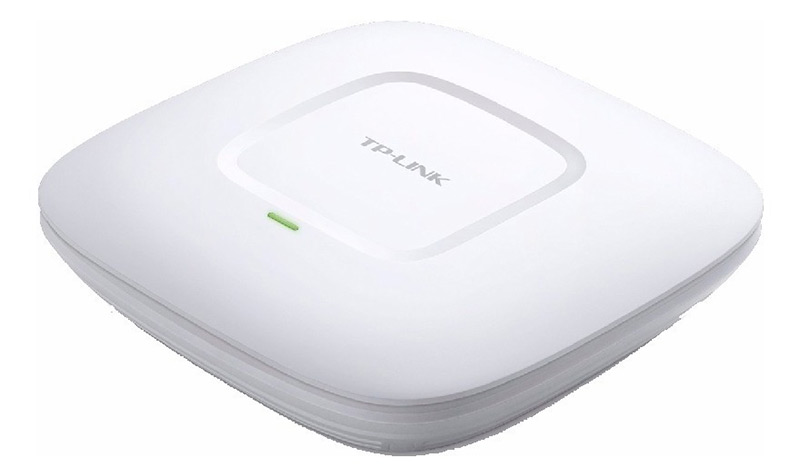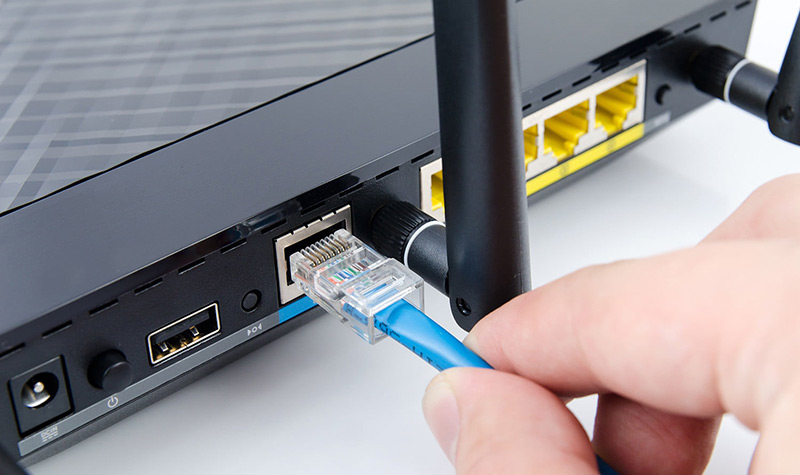
Index:
UPDATED ✅ Do you want to know what a Modem, a router and a WiFi access point are and how they differ? ⭐ ENTER HERE ⭐ and Learn all about it
If you have ever wondered what the difference is between a modem and a router and you haven’t found a satisfactory answer so far, don’t worry! In this post we will show you all the information you need know to know the difference between these two devices.
But this is not all. We will also advance on the basic notions so that you can distinguish what is a hotspot and how does this tool work.
Also, you will be able to distinguish which is the best of the three devices from different points of view. Let’s not waste any more time and start with our analysis.
What is a Modem and how does it work in a computer network? Characteristic
A modem is a device used in a computer network to convert signals, from digital to analog and vice versa. This process is called modulation and demodulation respectively, from this comes its name, being the acronym for “Modulation-Demodulation”. Namely, this device does not transmit the data, but converts it and leaves it ready so that they can be sent or received between the different components of a network.
There are 2 types of modems:
- internal modems, that are inserted inside another device and that use the electrical current of these as a power source. They do not have a plastic cover, so they cannot be transported independently, since they are usually connected through PCI bus.
- external modems, which can be seen and touched more easily, since they have a plastic casing. They must be placed somewhere close to the Internet wiring installation and their configuration is easier than installing internal drivers.
The modems have different modulation methods whose difference is characterized by the speed they present. Which can be from 300 to 8,000 bauds (this unit of measurement is a little higher than one bit per second).
What is a router and what is its role in a computer network? Characteristic
We said that the modem does not transmit the signal, but prepares it so that another device can send this information through a wireless microwave signal. This is the work that the router does and consists of deliver the requested information by some network node that has requested these data. It is also in charge of receiving all requests that the computers connected to the wireless network have. It translates these microwave signals into electrical signals and then sends the information to the modem so it can perform demodulation.
As a great feature, it stands out that does not need wiring to deliver an Internet signal. They are compatible with Wireless IEEE 802.11 standards, the most modern being 802.11ax (WiFi 6). They have 2 types of frequencies for signal emission, one 2.4 GHz and the other 5 GHz. Their transfer rates are up to 300 Mb/s and 450 Mb/s respectively.
The ports that it has allow you to connect printers, external hard drive and even SmartTVs wirelessly. In this way, it arises that there is the possibility of having dual routers that provide a service by air and another by cables.
Most modern routers have different frequency bands, ranging from 700 to 2600 MHz. Its configuration is simple and it comes by default from the factory, but it is always advisable to change different security parameters.
What is a WiFi hotspot and how does it work to give Internet to other devices? Characteristic

The access point is a device that is responsible for linking wired networks with wireless networks.. That is, when the AP is connected through the port Ethernet these two types of networks are being joined, thus generating that mobile devices can access an Internet network.
These APs are assigned a factory IP, which is used to configure the device through the web with the different security parameters. Other characteristics of this technology is that can be installed anywhere, as long as they have access to the Ethernet cable. But it will depend on the elements that surround them in order to have a more powerful signal and be able to better reach the other mobile nodes of the network.
Router vs Modem vs Hotspot Which one is better and how are they different?
A hotspot is a tool that allows access to the Internet in places where there is a high demand for connection to the web. It can be made up of one access point or several. It is used in places that have large coverage, such as bars, schools, airports, etc.
According to this definition, we can define if a router, a modem or a hotspot is better according to a certain characteristic. You must bear in mind that one depends on the other, since the modem modulates the data so that the router delivers it to an access point and this in turn to a mobile device.
Speed
As for the modem, if you consider the most modern devices where you can connect up to 4 Ethernet ports, you can have a speed of up to 1 Gbps. While a router, having a relatively normal distance between the receiving device, can reach a speed of up to 450 Mbps. You have to consider that the further a mobile device is from the router and the slower the navigation will be.
Regarding a Hotspot, it will depend on the speed of the other two computers, but it is always much lower than that of a router. This speed decreases even more when you are not using a modem to access the web.
Facility

If we consider an external modem, you will have a setup similar to a router. But if the modem is internal we will not need to install it, since this will come bundled on a computer or within the router provided by telephone operators.
Regarding a hotspot, it will depend on the coverage area that you want to cover. Since there can be one or several APs, so installation will always be more complicated than the other devices.
Setting
When it is an external modem it has a configuration similar to a router. It must be connected to a port in order to access the optical fiber either ADSL and then enter the configuration panel with a computer to make the necessary changes. In general, the name of the network, password and some filters are changed.
If the modem is internal, this configuration is different and a bit more complex. Since you will need to have the computer turned off, connect the modem to the motherboard, also to an Internet cable and just turn on the computer.
The operating system will automatically detect new hardwareso it will require the installation, by means of drivers, to then choose the configuration:
- For the Hotspot configuration it will depend on the operating system of the equipment. On an iOS device you will need to go to “Settings”then “Wifi” and at the end click on “Share internet”.
- While on an Android mobile you must also enter by “Settings”to choose “Plus”later “Anchoring to the network and WiFi zone”. To finish, you will have to go to “Set up Wi-Fi hotspot”then “Save” and finally to “Portable Wi-Fi hotspot”.
- In case of Windows you will have to enter “Setting”click on “Shared connection” and activate “Share internet”. While on a Mac you’ll need to tap the app “Airport”.
Security
Regarding security, all airborne devices always present a higher risk than connections made by cable. But since we’re looking at these wireless devices, the modem is the one that offers greater security. Since the intersection level of the signal is much more difficult than that produced by a router. In turn, a hotspot is much more vulnerable than a router.
Importance
The modem is the most important of all equipment. Without this device, a router would not have internet. Although a Hotspot can access the web without a modem, but the speed is much more limited and at the same time it presents a greater vulnerability with respect to security.
Therefore, the importance of the modem is significant in wireless networks.
WiFi 6 What is it and how could it improve the quality of routers and hotspot?

WiFi 6 is a new technology named after the association that promotes the implementation of wireless connections, the “Wi-Fi Alliance”. This type of network works with the standard 802.11ax and is compatible with previous Wi-Fi protocols.
It is necessary to take into account that in order to enjoy this new generation of data transmission, it is necessary that the sender and receiver of the signals are compatible with WiFi 6. Since, if either of the 2 devices does not support this signal, the navigation will be carried out using older protocols. With this technology, you will go from having a data speed of 433 Mbps to a 600 Mbpswhile the percentage of utilization will go from 512 to 2048. There will also be a significant change in the higher data modulation, the current WiFi has 256 QAM, while the new version will reach 1024 QAM. That is, from 6.9 to 9.6 Mbps respectively.
For all this we can conclude that, although there will be an increase in efficiency and the connections will have a much better stability, even though they are congested, The security vulnerability issue cannot be fixed yet. Since a wired network with a protagonist modem is still much more secure.
networks